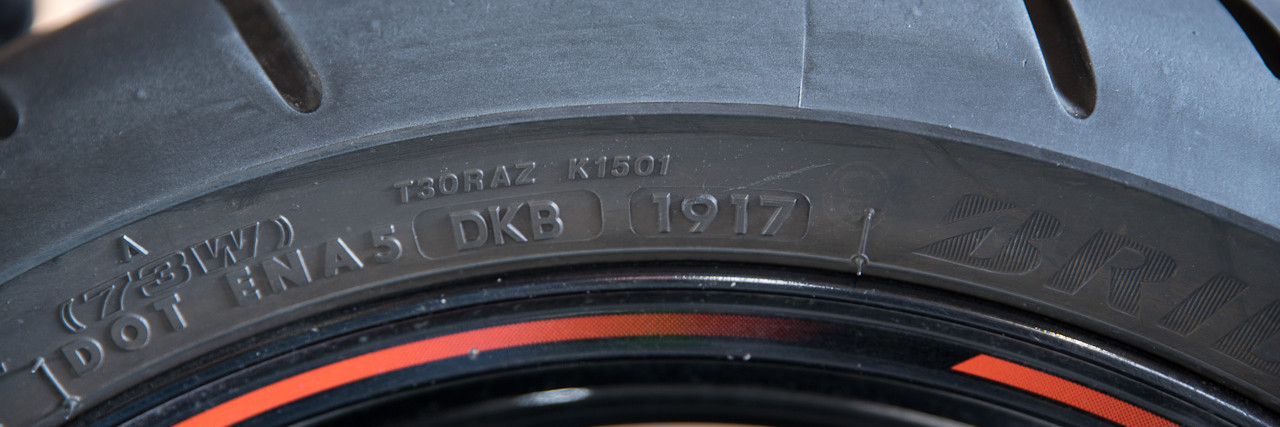Looking after your tyres
Tyres are crucially important on a motorbike. They need checking regularly and proper maintenance to keep them in top shape.
Looking after your tyres
Regular checks
You life depends on the performance of the tyres on your motorcycle. Poor grip or a puncture on four wheels are nothing compared to the dramas you’ll have on just two. So paying the utmost attention to tyres makes sense.
Start by giving your tyres the once-over every single time you ride: take a good look over both ends for anything untoward, and run your hands over the surface. You’re basically looking for anything that might have got stuck in the tyre, any damage, bulging or contamination, and that the tyres are inflated.
Check your tyre pressures at least once a week (see below for more information on pressures) and, when you do, give the tyre even closer scrutiny. Look for any signs of cracking on the sidewalls or abnormal wear on the tread.
Minimum tread depth
The legal minimum tread depth is 1.5mm in all the ‘principal grooves’ around the entire circumference of the tyre. ‘Principal grooves’ are the ones that have a tread depth indicator in them: these are the thin ‘flaps’ of rubber that sit crosswise in the groove and they are 1.5mm in height. Measure tread depth with a gauge or a steel ruler and make sure you do it at several places around the circumference.
While 1.5mm is the legal minimum, your tyres’ performance will be substandard before they get there, especially in the wet. It’s far better to replace your tyres at 2mm. And that’s not the only criterion for replacement.
If your tyres are more than ten years old manufacturers advise that you should have them checked annually by a tyre specialist. Frankly, motorcycle tyres can easily go ‘off’ long before then, especially if they haven’t been kept in the best conditions. The consequences show up in lack of predictable grip, poor feel and a lack of confidence: there’s no pleasure in that and it’s not safe. View five years as the likely ‘life’ of a tyre, even if it’s not worn out.
Tyre pressures
Tyre pressures differ from bike to bike. Use the manufacturer’s recommended pressures as a starting point, and a default if you’re unhappy, but you can adjust them to improve grip, feedback comfort or wear. Tyres provide roughly 25% of the suspension compliance on your bike, so just as a 50kg rider will want different suspension settings to someone weighting 110kg, a slight change of tyre pressures can deliver real benefits.
The essential trade-off is between grip and wear. In general, lower pressures will provide more grip, unless you go too low, while higher pressures make the tyre stand up better to wear–but again you can go too far. The way different tyres are made can affect the pressures you need. A stiffer carcass will require lower pressures than a softer one, and vice versa. A heavier rider (or adding a pillion, luggage, etc.) will require higher pressures than a lighter one. Pressures also rise with temperature.
If you do want to experiment, make any adjustment no more than 2psi and evaluate the difference thoroughly before going further or back the other way.
If you do track days, experimenting with pressures is key to finding grip and making your tyres last. Getting it wrong can cause catastrophic wear.
One last thing to note is what you put the air in your tyres with. The compressors for garage airlines are not always dried out as they should be, meaning water vapour can get into your tyres. This will make them vary wildly with temperature. Ask your local garage when they last cleaned and drained the air compressor, and see what they say. You might want to invest in a foot pump or your own compressor.
When to replace tyres
It’s time to replace tyres when:
- The tread depth is less than 2mm.
- There’s any sign of cracking, bulging or other damage.
- The tyres are more than five years old.
- They have had a puncture repaired to get you home.




